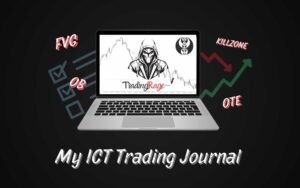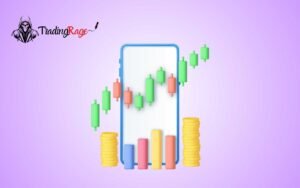So, you’ve heard about Forex trading, and you’re intrigued. Maybe you’re looking to diversify your investment portfolio, or perhaps you’re drawn to the idea of trading currencies from the comfort of your own home. Whatever the reason, diving into the world of Forex trading can be both exciting and intimidating. But fear not because, in this TradingRage article, we’ll break down the basics of Forex trading and provide you with the essential information you need to get started.
Check out my ICT trading journal for full explanations of every trade I take.
What is Forex Trading?
Forex, short for foreign exchange, is the global marketplace where currencies are traded. Unlike stock markets, which have a centralized exchange, Forex operates 24 hours a day, five days a week, across different financial centers worldwide. Trillions of dollars are traded on the Forex market every day, making it the largest and most liquid financial market in the world.
How Does Forex Trading Work?
At its core, Forex trading involves buying one currency while simultaneously selling another. Currencies are traded in pairs, with each pair representing the exchange rate between two currencies. For example, in the EUR/USD pair, the first currency (EUR) is known as the base currency, and the second currency (USD) is the quote currency. If you believe the euro will strengthen against the dollar, you would buy the EUR/USD pair. Conversely, if you expect the dollar to strengthen, you would sell the pair.
Key Players in the Forex Market
Several participants drive the Forex market, including central banks, commercial banks, hedge funds, multinational corporations, and retail traders like yourself. Central banks play a crucial role by implementing monetary policies and interventions to stabilize their respective currencies. Commercial banks facilitate currency transactions for their clients, while hedge funds and multinational corporations engage in Forex trading to hedge against currency risk or speculate on exchange rate movements.
Understanding Forex Charts and Analysis
Technical and fundamental analysis are two primary methods used by Forex traders to forecast price movements. Technical analysis involves analyzing historical price data and identifying patterns to predict future price movements. Common tools used in technical analysis include chart patterns, indicators, and trend lines. On the other hand, fundamental analysis focuses on economic indicators, geopolitical events, and central bank policies to assess the intrinsic value of currencies. By combining both approaches, traders can make more informed trading decisions.
Risks and Rewards of Forex Trading
Like any form of trading, Forex trading carries inherent risks. Market volatility, leverage, and geopolitical events can all impact currency prices and lead to significant losses. It’s essential to manage risk effectively by setting stop-loss orders, diversifying your trades, and avoiding overleveraging your positions. However, with risk also comes the potential for rewards. Successful Forex traders can generate substantial profits by capitalizing on price fluctuations and implementing sound trading strategies.
Getting Started in Forex Trading
To start trading Forex, you’ll need to open an account with a reputable brokerage firm that offers access to the Forex market. Choose a broker that is regulated, offers competitive spreads, and provides a user-friendly trading platform. Once you’ve opened an account, you can fund it and start placing trades. However, before diving in, it’s crucial to educate yourself about the Forex market, develop a trading plan, and practice with a demo account to gain experience without risking real money.
Conclusion
Forex trading offers an exciting opportunity to profit from the fluctuations in global currencies. However, it’s essential to approach it with caution and educate yourself about the market dynamics, trading strategies, and risk management techniques. By doing so, you can increase your chances of success and navigate the Forex market with confidence. So, whether you’re a seasoned investor or a complete novice, take the first step towards Forex trading and embark on a journey of financial growth and empowerment.



